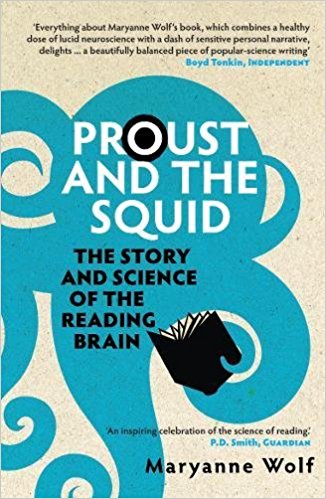 We were never born to read. Human beings invented reading only a few thousand years ago. And with this invention, we rearranged the very organization of our brain, which in turn expanded the ways we were able to think, which altered the intellectual evolution of our species. Reading is one of the single most remarkable inventions in history; the ability to record history is one of its consequences. Our ancestors’ invention could come about only because of the human brain’s extraordinary ability to make new connections among its existing structures, a process made possible by the brain’s ability to be shaped by experience. This plasticity at the heart of the brain’s design forms the basis for much of who we are, and who we might become.
We were never born to read. Human beings invented reading only a few thousand years ago. And with this invention, we rearranged the very organization of our brain, which in turn expanded the ways we were able to think, which altered the intellectual evolution of our species. Reading is one of the single most remarkable inventions in history; the ability to record history is one of its consequences. Our ancestors’ invention could come about only because of the human brain’s extraordinary ability to make new connections among its existing structures, a process made possible by the brain’s ability to be shaped by experience. This plasticity at the heart of the brain’s design forms the basis for much of who we are, and who we might become.
Proust and the Squid: The Story and Science of the Reading Brain
by Maryanne Wolf
Underlying the brain’s ability to learn reading lies its protean capacity to make new connections among structures and circuits originally devoted to other more basic brain processes that have enjoyed a longer existence in human evolution, such as vision and spoken language. We now know that groups of neurons create new connections and pathways among themselves every time we acquire a new skill. Computer scientists use the term “open architecture” to describe a system that is versatile enough to change – or rearrange – to accommodate the varying demands on it. Within the constraints of our genetic legacy, our brain presents a beautiful example of open architecture. Thanks to this design, we come into the world programmed with the capacity to change what is given to us by nature, so that we can go beyond it. We are, it would seem from the start, genetically poised for breakthroughs.
Thus the reading brain is part of highly successful two-way dynamics. Reading can be learned only because of the brain’s plastic design, and when reading takes place, that individual brain is forever changed, both physiologically and intellectually. For example, at the neuronal level, a person who learns to read in Chinese uses a very particular set of neuronal connections that differ in significant ways from the pathways used in reading English. When Chinese readers first try to read in English, their brains attempt to use Chinese-based neuronal pathways. The act of learning to read Chinese characters has literally shaped the Chinese reading brain. Similarly, much of how we think and what we think about is based on insights and associations generated from what we read. As the author Joseph Epstein put it, “A biography of any literary person ought to deal at length with what he read and when, for in some sense, we are what we read.”
These two dimensions of the reading brain’s development and evolution – the personal – intellectual and the biological – are rarely described together, but there are critical and wonderful lessons to be discovered in doing just that.